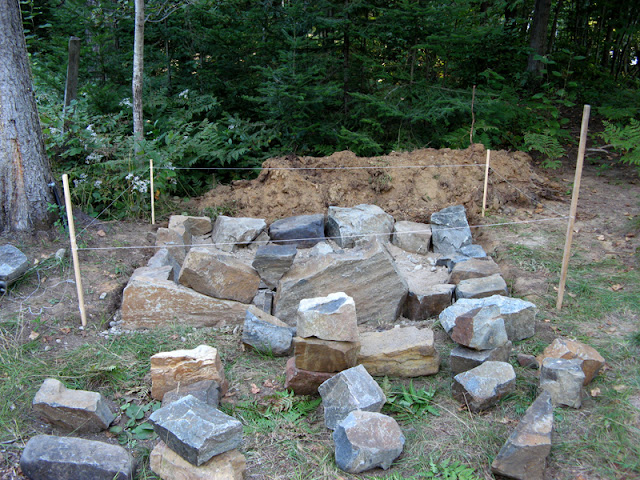I started researching "stone" ovens on the internet (hey, why experiment when others had undoubtedly perfected oven building since man discovered fire). First of all, from what I gathered, if one built a stone-walled oven, the high temperatures could heat up tiny pockets of water trapped within the stone leading to little "explosions" of steam that would pop shards of rock into the oven and potentially any food that was cooking (this is called "spalling"). So time to change plans. Why not use BRICKS!! Clay bricks are kiln dried and in general do not have this problem. So the idea was now to build the actual oven out of brick and place it on the stone base. And from my now voracious reading, I was "informed" that the bricks should be covered by insulation - this will hold the heat in the bricks after firing, allowing them to radiate the heat back into the oven for hours (even overnight). Otherwise the bricks will get hot but radiate the heat outwards making the oven inefficient and very hot to touch...
OK, so my original plans are now no darn good. My stone shell will now have to be filled and the brick oven can be built on top...but I will need a much larger footprint as now the oven will be insulated. No problem...
bunch of river rocks to the oven base and dumped them in. I also enlarged the footprint of the base by using some concrete ("cinder") blocks that had been dumped at the local quarry. I like this as it is free and, best of all, reuses discarded material (recycling!). I knew this new wall was going to look ugly, but it is at the back of the oven and I envisioned that eventually it would be covered with a wood storage area (a little wood "shed").



I covered the top of the stone filler layer with old broken hockey stick shafts (the new composite ones - very strong) that were also free and being reused instead of ending up at the dump. A couple of rows of bricks were used to make sure I had a level base on which to build the actual oven. Then the base of the oven needed insulating - I opted to use perlite. Perlite is an amorphous volcanic glass that, after processing, makes a lightweight insulator that is also strong. I mixed the perlite 10:1 with portland cement and dumped it on top of the hockey stick/rock base. The perlite/cement mix is easy - dump 10 buckets of perlite in the wheelbarrow, add 1 bucket of water, mix with a shovel for a few minutes, then use.

Why the mask (below)? Perlite dust is toxic!! Probably not as bad as asbestos, but not something you want to suck into your lungs.








